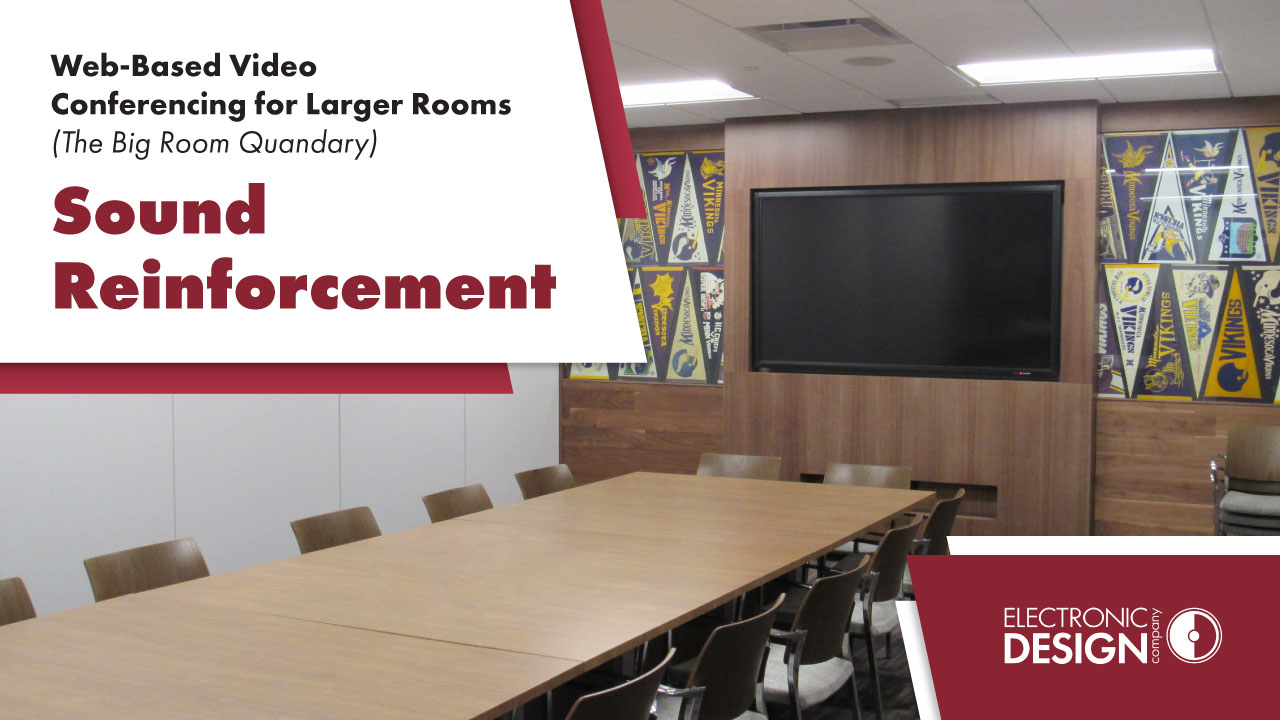
Web Based Video Conferencing for Larger Rooms (The Big Room Quandary): Sound Reinforcement
November 10, 2021Back in my early days of college there would be those classes that were requirements for all the freshmen. You would inevitably find yourself in a big hall of perhaps a hundred other students. In those days (and I am dating myself here) you were straining to hear a professor who had no microphone. Fortunately, that scenario is mostly a thing of the past. Lecture halls have, for the most part, microphones and speakers to help the teachers convey their message more clearly. What is a newer phenomenon is that not all class attendees are there in person. The proliferation of video conferencing and streamed training sessions require marrying the conference equipment with the sound system. On a smaller scale, even some bigger boardrooms may need sound reinforcement for the speakers to be clearly heard. This presents a few hurdles to overcome when thinking about the sound system design for the space.
An advantage when it comes to training/classrooms is that a sound system of some kind may already be in place. Existing microphones (often wireless), speakers and amplifiers can often be integrated with new conferencing equipment and/or computers running conferencing software. What is often lacking is the processing. The presenter microphone and content audio will need to be routed not only to the room speakers but also to the far end content stream and sometimes an audiovisual recording device. If class attendees are also expected to be heard at the far end, then those microphones will also need to be mixed and routed to the conferencing equipment but not through some of the overhead speakers in order to mitigate feedback problems.
Zoning of overhead speakers can assist in reducing feedback issues by turning off speakers around the speaker and their microphone. The addition of these many audio sources into the conferencing system means the built-in acoustic echo canceling of a soft-codec (Zoom, Teams, etc.) can’t keep up with processing demands and should instead be done by a digital signal processor (DSP). Having a DSP as the central audio hub can eliminate the need for other outboard equipment and operators simplifying and automating those functions (see the previous AEC post).
When it comes to conference rooms, we don’t often think of sound reinforcement being a requirement. And if there are only a handful of people involved this may be the case. Larger meeting spaces and boardrooms, however, can still creep into that scenario of lacking intelligibility due to the distance between speaker and listener. This is where a voice-lift system can help. Voice-lift is still sound reinforcement but on a smaller scale. Imagine a speaker at the head of a long conference table. The people seated next to them can hear them just fine. If you have some overhead speakers at the other end of the table, they can raise the volume of the speaker just enough to match the volume as if they were also sitting next to the speaker. The trick is turning off the speakers over the microphone being used while turning up the speaker farther away. This is called mix-minus in the industry and can be used to greatly enhance meeting room intelligibility. Again, a DSP is employed to automate which mics and speakers are “on” within the room at any given moment while still sending that signal to the remote attendees.
Whatever conferencing system is employed, reproduction of the far end audio content is a big consideration and often how we judge the quality of the system. You will always be limited by the many things it takes to get the audio stream over the web and into the room. Microphones (gaming console headsets, anyone?), bandwidth, computer processing power and how beat up is that little mic jack on their computer are all things we have very little control over. What we do have control of is the quality of the sound equipment and the expertise of professionals that can tune the space to sound the best that it can.
NEXT INSTALLMENT: Control Systems


